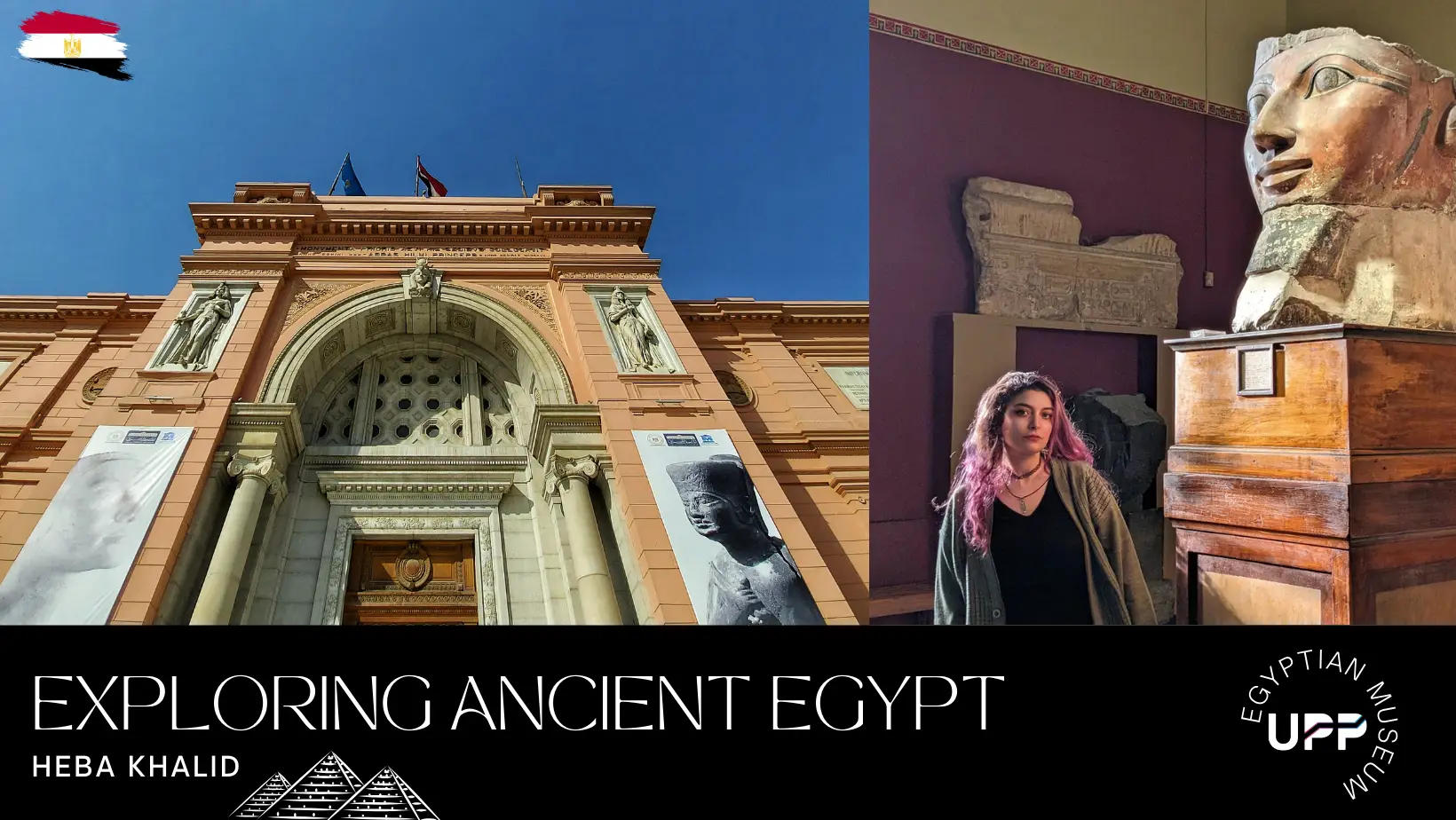I first wanted to check out the new Egyptian Museum, but unfortunately, I needed to book in advance. No big deal, though, because the one I visited had tons of awesome things like mummies and iconic artifacts and ancient vibes that practically whispered tales of the past.
Now, let’s talk about this gem of a place. It’s not just about Egyptian antiques; it’s like a time capsule from various eras in Egypt’s history. This spot’s been standing for over a century! I must admit, the sheer size of the place blew my mind, just like Egypt’s rich heritage. I couldn’t see everything because it wasit’s so big. But what I did see was amazing!

Osiris Shroud of Shedher
Thebes – Deir El-Bahari – Linen
The ancient Egyptians believed that if they had lived a just and ethical life the soul (ka, ba, akh)
would live eternally, and could reanimate the corpse, which is why the preservation of the body through mummification was crucial.
Mummification evolved over 3000 years, varying depending on the time period, the wealth and status of the deceased, and the fashions of the day. In an ideal mummification, the brain was removed via the nose and replaced by melted resin. The stomach, intestines, lungs, and liver were taken out by a cut on the left side, dried separately, and placed in canopic jars or back in the body. Next, the corpse was washed with palm wine, dried with linen towels, and then buried in natron (a naturally occurring mixture of salt and baking soda) for 40 days to defat and dry out. During the next 30 days the body was cleaned off and oiled. Prayers were read over it and it was wrapped in linen bandages with amulets placed within the wrappings, then it was taken to the tomb for burial.
At the tomb, priests carried out the Opening-of-the-Mouth ritual on the mummy, restoring its senses. Then the mummy was placed in coffins and buried.
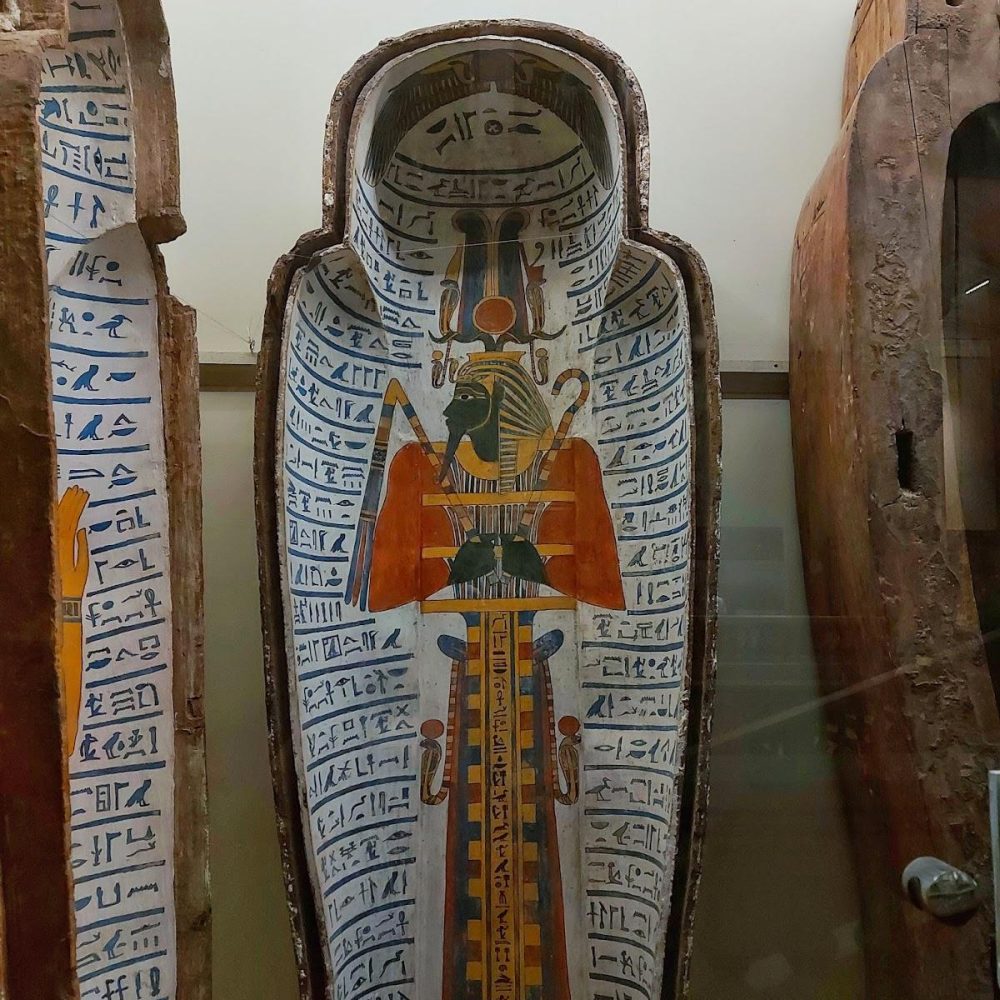
Inner coffins of Ankhefenkhonsu
Inner coffins of Ankhefenkhonsu is The two-piece inner coffin of Ankhefenkhonsu is made of layers of linen glued together in the shape of the body and then plastered and painted.
On the outside of the lid, the goddess Nut, depicted in the form of a hieroglyph for protection, spreads her arms over the mummy, and the god Osiris, shown as a dead pillar, is shown inside the button half of the coffin.
The hieroglyph texts inside and outside are spells from the Book of the Dead. Linen Layers, Plastered, and Painted, Early 25th
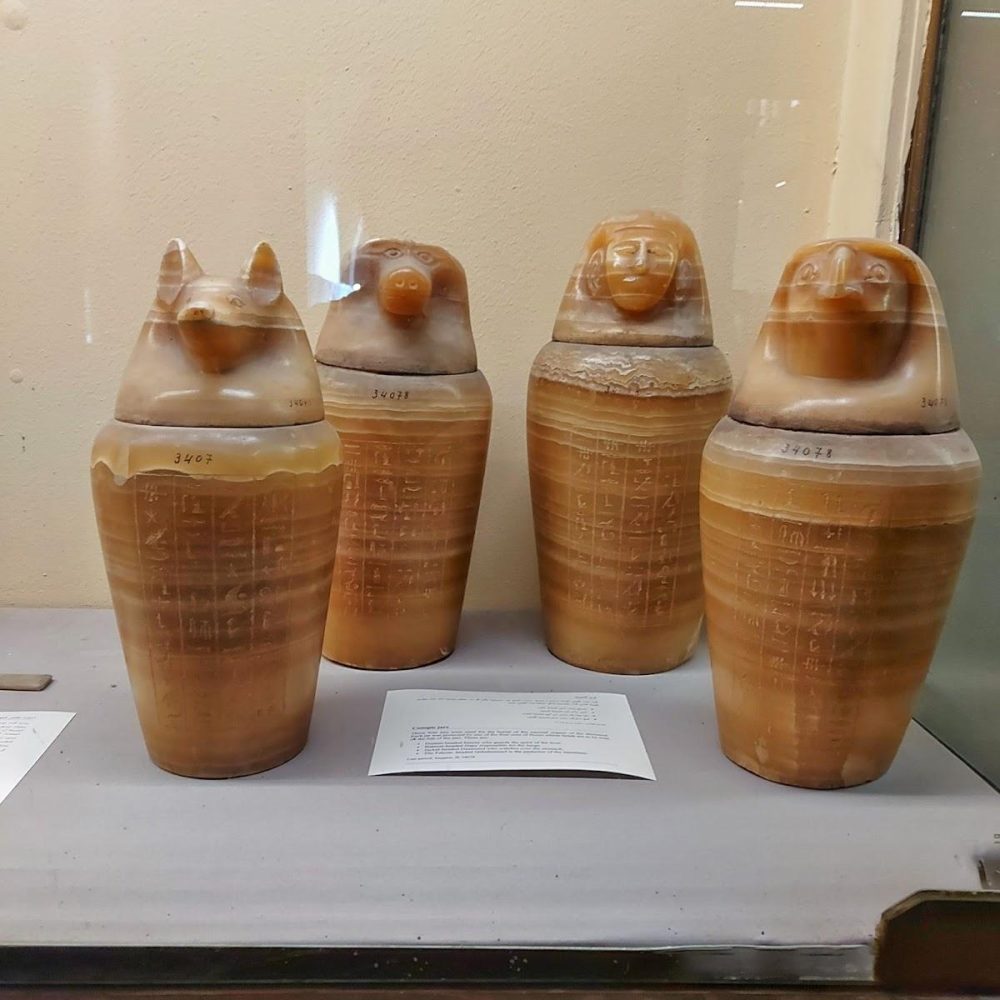
Canopic jars
Canopic jars These four jars were used for the burial of one of the internal organs of the deceased. Each jar was protected by one of the four sons of Horus, whose heads are to be seen on the lids of the jars. These are Human-headed Imsety who guard the spirit of the liver.
Baboon-headed is responsible for the lungs. Jackal-headed Duamutef watches over the stomach, The falcon-headed Qebehsenuef is the protector of the intestines. Late period: Saqgqara.
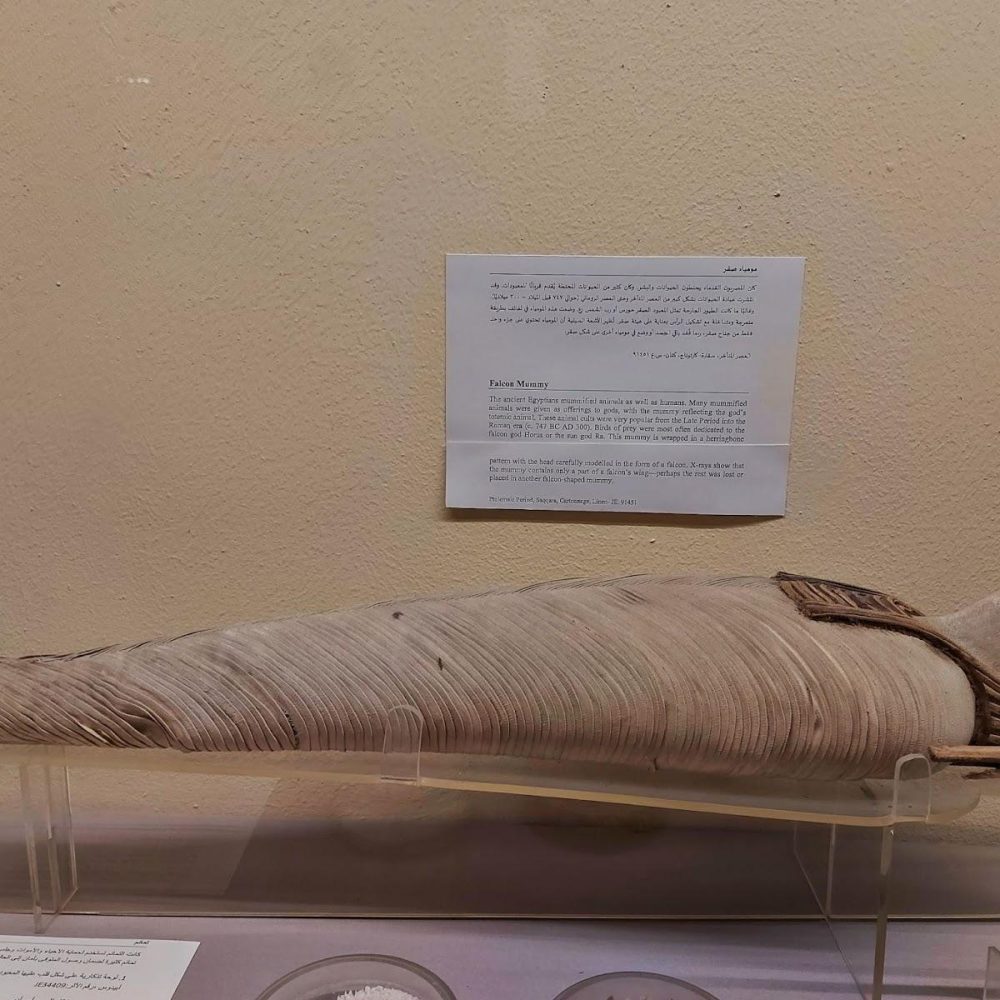
Falcon Mummy
The ancient Egyptians mummified animals as well as humans. Many mummified animals were given as offerings to gods, with the mummy reflecting the god’s totemic animal. These animal cults were very popular from the Late Period into the Roman era (c. 747 BC–AD 300).
Birds of prey were most often dedicated to the falcon god Horus or the sun god Ra. This mummy is wrapped in a herringbone pattern, with the head carefully modeled in the form of a falcon. X-rays show that the mummy contains only a part of a falcon’s wing—perhaps the rest was lost or placed in another falcon-shaped mummy. Ptolemaic Period, Saqgara, Cartonnage, Line
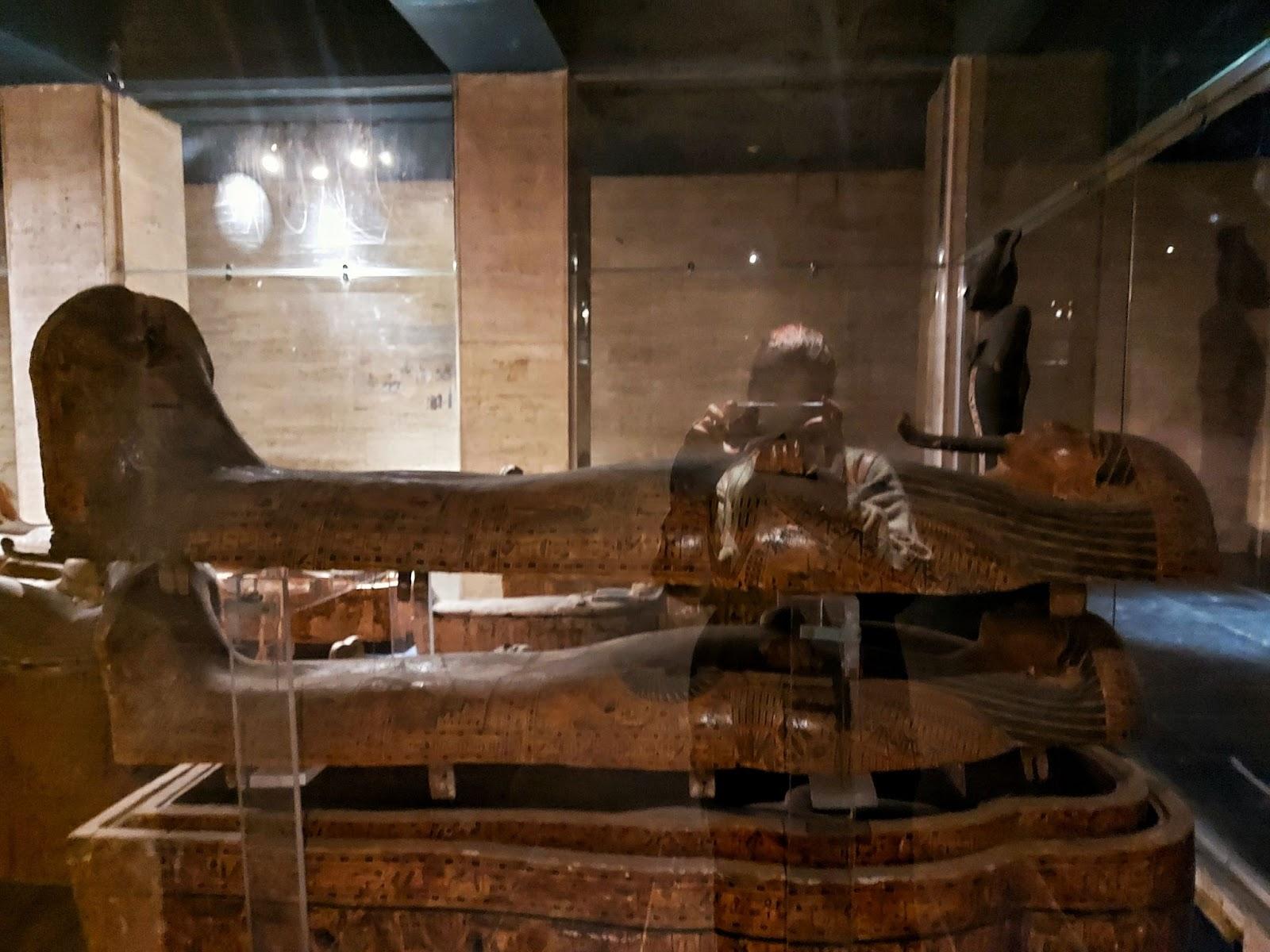
The inner coffin and mummy board of Meritamun
FAKE MUMMIES
A number of votive mummies appear to be ancient fakes. Some mummy bundles that are wrapped to look like mummies (cat, dog, hawk, etc.) are actually empty or contain fragments of bone, lumps of mud, or chunks of resin. Perhaps these fakes were made by priests when there were not enough animals to offer. These bundles occasionally contain portions of the animal that they are supposed to represent. In these cases, it is possible that the part represents the whole. It is also possible that the feathers or other fragments that are wrapped became detached during the mummification process and were served separately as an alternative to throwing them away. Some scholars interpret these bundles as the collected fragments of anything that has lived within a sacred site or enclosure and has thus become sacred by association with that place.
Tutankhamun Hall
it was like stepping into a real-life treasure chest! The moment I walked in, I was surrounded by the incredible artifacts from the life of the boy king, Tutankhamun. It’s mind-blowing to think that these things have been around for thousands of years. Now, here’s the little hiccup: I couldn’t snap any pictures to share the magic because, you guessed it, no photography is allowed for security reasons. But that just meant I could soak it all in without any distractions. The golden mask, the dazzling jewelry, and the intricately carved statues—they all told the story of a fascinating era. Imagine being in the presence of history without the constant click of cameras! It made the experience even more special.
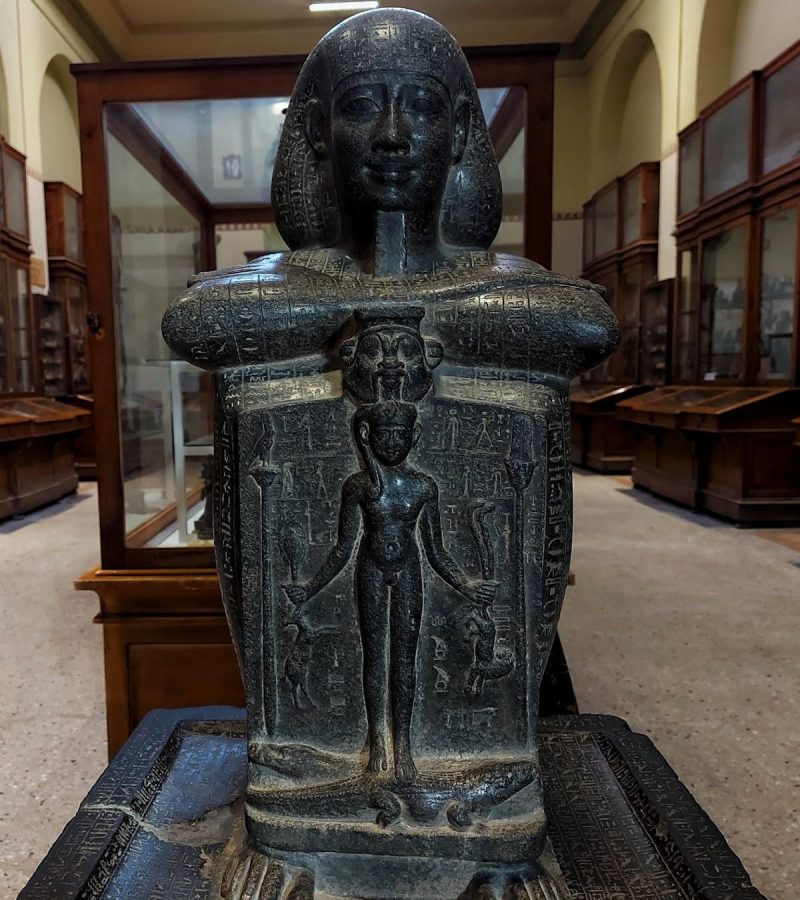
Djedhor Cube Statue
Emphasizing the protective properties of the statue! The stela also relates the myth of Isis hiding her son Horus in a papyrus marsh to protect him from the god Seth. Macedonian Dynasty, reign of Philip Arrhidaeus (323–317 BC);
Basalt; the power of the words, and then be drunk as a cure. The healing and protective texts over water, wine, or wild and dangerous creatures. The statue is inscribed with triumphing over crocodiles, snakes, scorpions, and other liquids that would be poured. The liquid would of a healing statue and a cippus, a stela showing Horus acted as a source of’medicine and is a combination at Athribis, was venerated as a holy man.
This statue of Djedhor, a priest responsible for the temple of Horus, is the Statue of the Priest Djedhor.
Fayum portraits
Let’s dive into the fascinating world of Fayum portraits, ancient paintings from Greco-Roman Egypt (1st century BC to 3rd century AD). Imagine this: portraits on wooden panels placed over mummies’ faces, preserving their image for the afterlife.
Now, here’s the cool part: as I stared at these portraits, I couldn’t shake the feeling that the people depicted could easily be my friends or family. The details in their expressions, hairstyles, and clothing are surprisingly relatable, blurring the lines between ancient and modern. It’s like stumbling upon a family album from centuries ago, connecting us with real individuals who once lived and breathed.
Only Statue of King Kufu
The only sculpture I stumbled upon related to Khufu, the great pyramid builder, was this tiny marvel! Imagine, amidst all the colossal sculptures, a miniature representation of one of the most significant pharaohs in Egyptian history.
It’s like finding a hidden gem. This tiny sculpture, though small in size, carries a colossal weight of historical importance. I couldn’t help but marvel at the craftsmanship and detail packed into this little artifact. It’s a gentle reminder that sometimes greatness is found in the smallest of things.
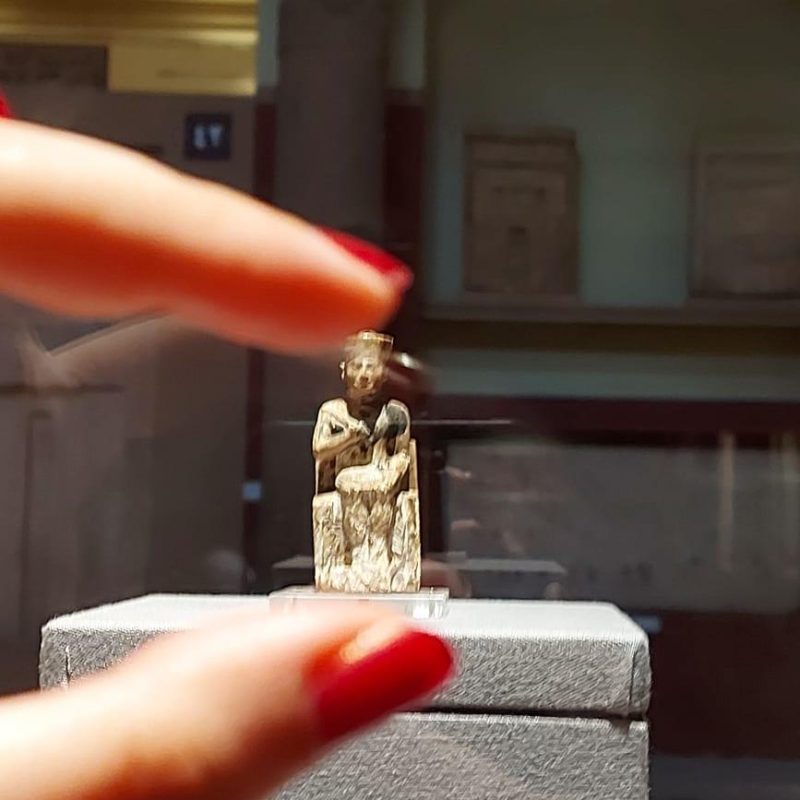
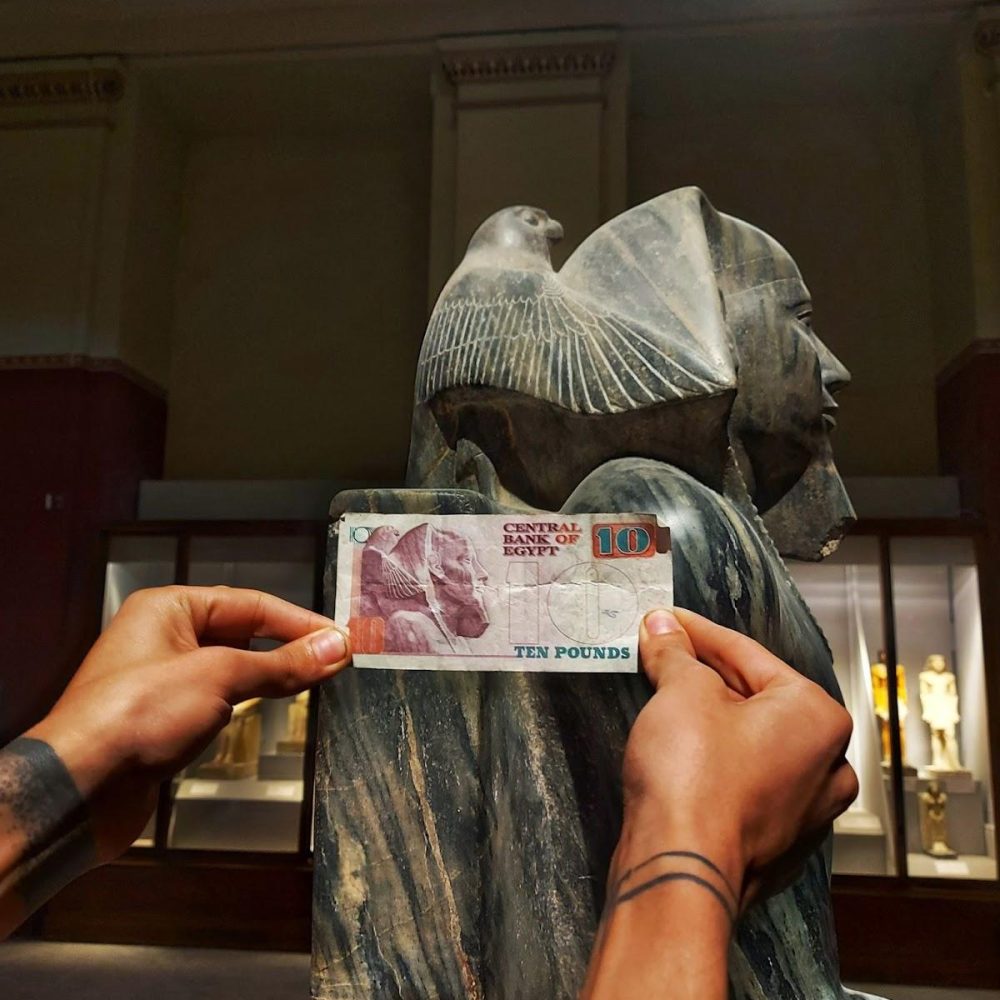
Khafre & Craftmanship
Khafre was the builder of the second statue, which is made of diorite quarried in Tushki, the pyramid at Giza. The king was seated near Abu Simbel. The use of this stone throne, which wears the names with the cobra on it, clearly shows the power of Khafre’s forehead, a symbol of royalty, stretched all the way to the south of the protection. The falcon god Horus behind his head spreads his wings to protect him.
What a surprise!
This iconic statue, immortalized on our currency, is a testament to its cultural significance. The craftsmanship and attention to detail, which might go unnoticed in our everyday transactions, take center stage in the museum’s exhibit. It’s like having a piece of history right there in your hands, or in this case, right in front of your eyes.
Ka Statue of King Hor I (Au-ib-Re)
This statue depicts the King’s Ka, which means consort or living forces in the ancient Egyptian language.
The Ka sign is above the king’s head with two arms raised The Ka is one of the seven components of the body of the ancient Egyptians. It is upwards, each ending with a splayed palm. dissolves in the body to ensure its protection, health, and purity. It remains with him
until his death. so the ancient Egyptian strove hard to preserve his body so that the Ka could recognize him in the other world after leaving him at his death. Sycamore, quartzite, and crystal rock.
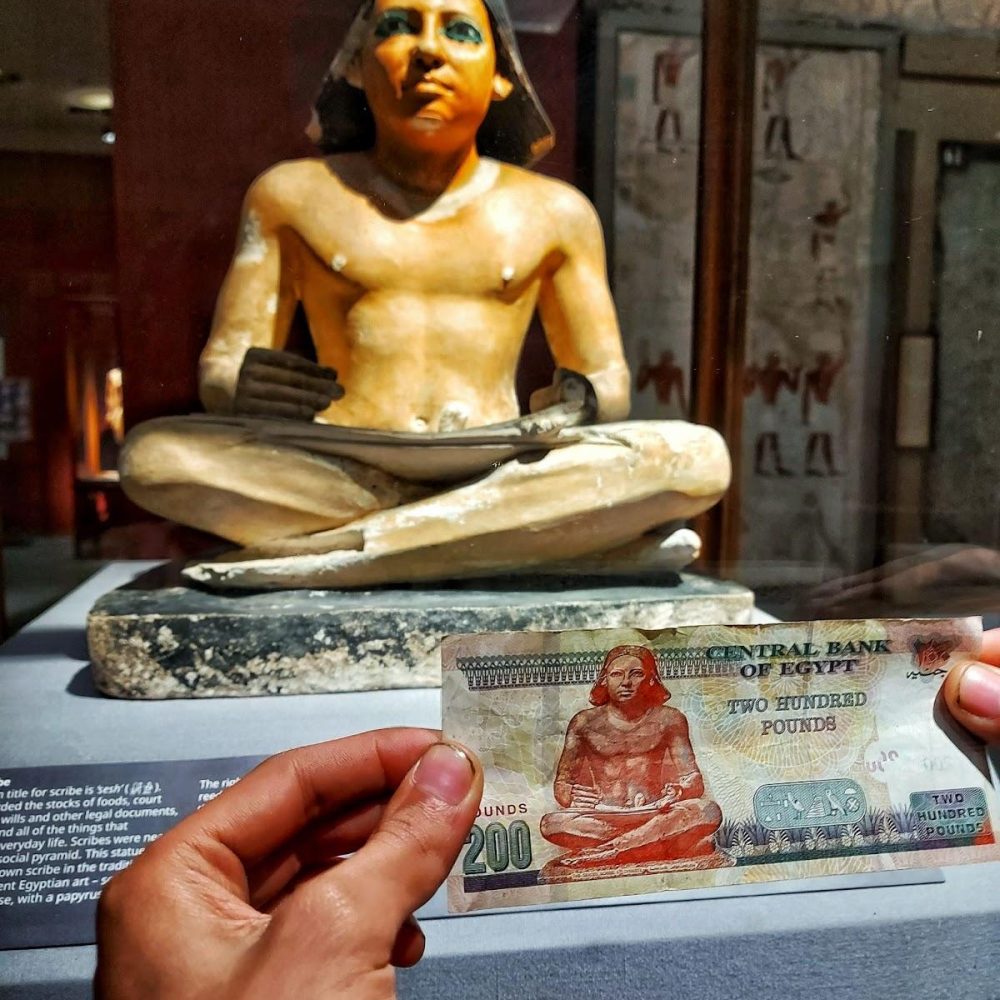
Seated scribe

Now, let’s dive into the colossal Egyptian sculptures – they left me utterly awestruck! Picture this: towering monuments that seem to reach for the sky, telling tales of ancient craftsmanship and artistic mastery.
This colossal statue represents Senwosret III. Discovered in the cult complex of the god Amun at Karnak, the statue shows the king in the double crown of a united Egypt. Amun Waş is a local Theban god who first became important during the Middle Kingdom, when princes from this area reunified.
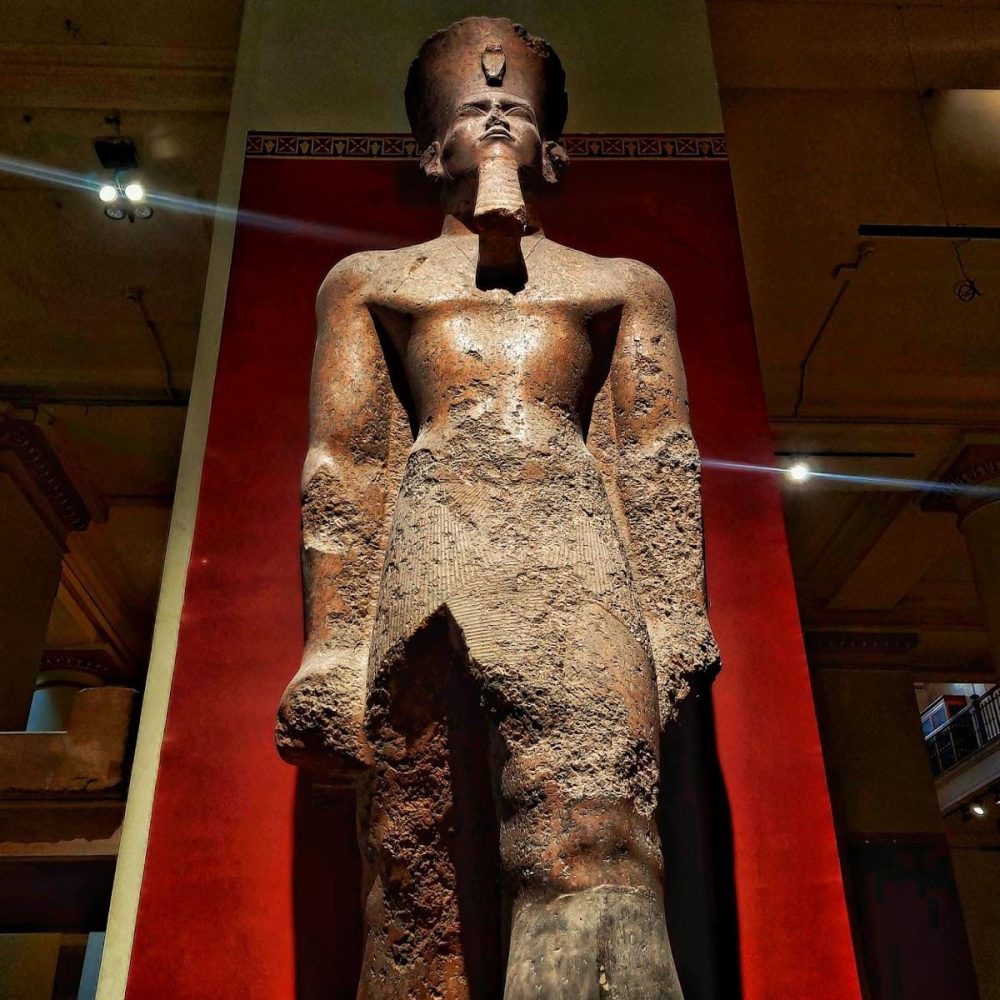
SENWOSRET III
Hatshepsut
first female ruler of ancient Egypt
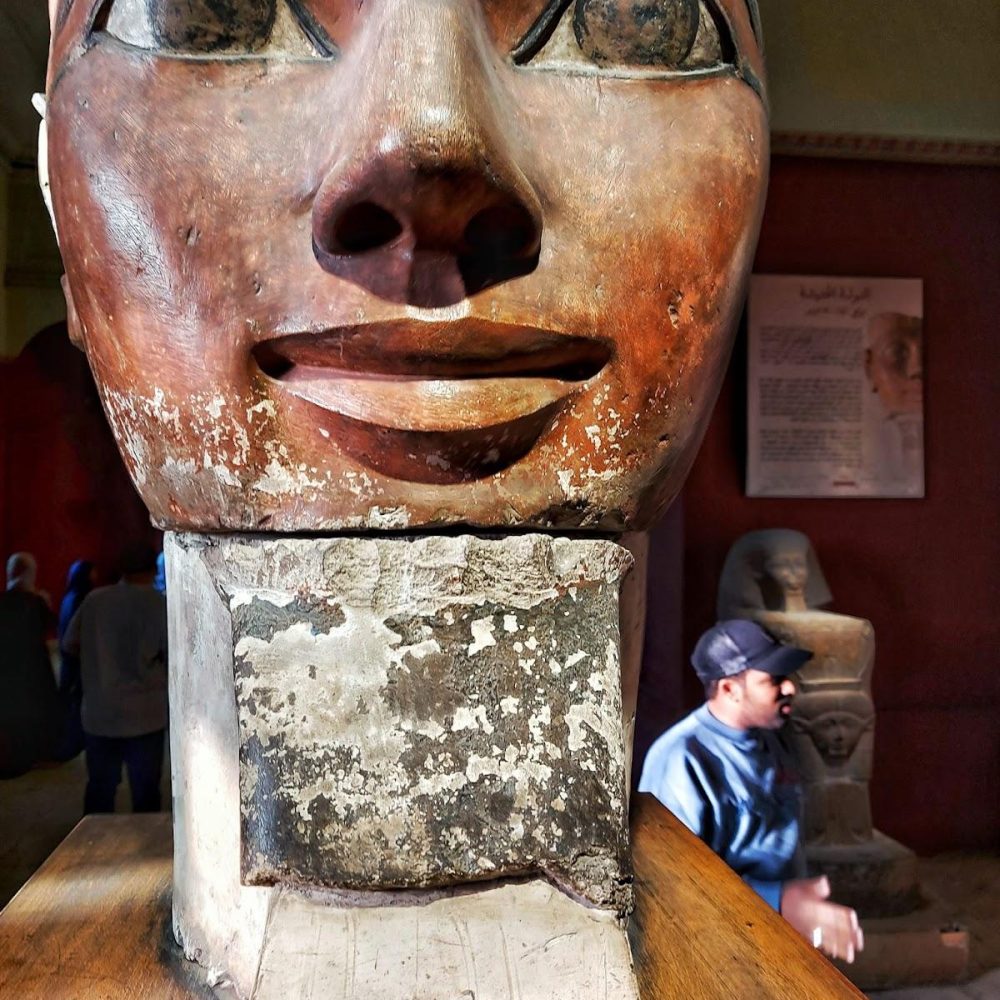

Here’s a fun fact about the museum: it’s not just ancient artifacts on display; they’ve got tools used to build the museum itself! Imagine the tools that crafted the very place you’re wandering through.
A wooden box with silver fittings to hold the cement; a trowel and an axe, all used for the placement of foundation stone; and an inkstand and a pen for the signing to commemorate the foundation ceremonies of the present Egyptian museum on April 1st, 1897
At the end of the day, my feet were giving me a hard time after wandering around the massive museum. You know, that good kind of tiredness when you’ve seen so much and your brain is buzzing with all the amazing stuff you witnessed?
I couldn’t help but be grateful that the next day was off (even though I’m not a big fan of taking days off). The ache in my feet was like a trophy, a reminder of the incredible details I soaked in at this masterpiece of a building.
